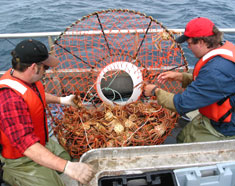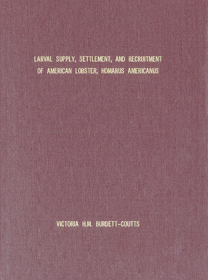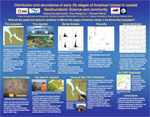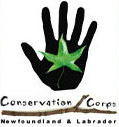
Community - University Research for Recovery Alliance

Critical Habitat
Lobster and Crab

Our settlement work in 2007, and a modified settlement study in 2008, produced disappointing results with very low numbers of settlers. From this limited study it is difficult to know whether the low settlement yields reflect a poor settlement year, lower abundances of lobster in Newfoundland than in more southerly areas where the approach has been used with greater success, or that other locations are preferable.
Larval sampling in 2008 was extremely successful and we observed more different larval stages than in previous sampling efforts in the region. Results indicated that early stage larvae are relatively abundant throughout inner and outer Bonne Bay, but late stages are almost uniformly absent from East Arm. There is also substantial year to year variation in larval lobster. In 2008, many more larvae of all stages were observed than in previous years, perhaps reflecting warmer water and thus higher survival. Fishermen have highlighted some important findings on lobster biology that may contribute to future research questions on migratory patterns of berried females, and on the impacts of wind direction on catch rate. Additionally, fisher knowledge of bottom type may be useful for generating predictions of potential nursery habitats when considered in tandem with known biology of the early life stages of American lobster.
Researchers and Partners
Lead Researcher:
Paul
Snelgrove
Student:
Victoria Burdett-Coutts, M.Sc. Biology
Conservation Corp Intern:
Karla Burt
Community Partners:
Jason Spingle
Fish Food and
Allied Workers Union (FFAW)
Darren Feltham
Conservation
Corp of Newfoundland and Labrador
 Marine Station
Marine Station





